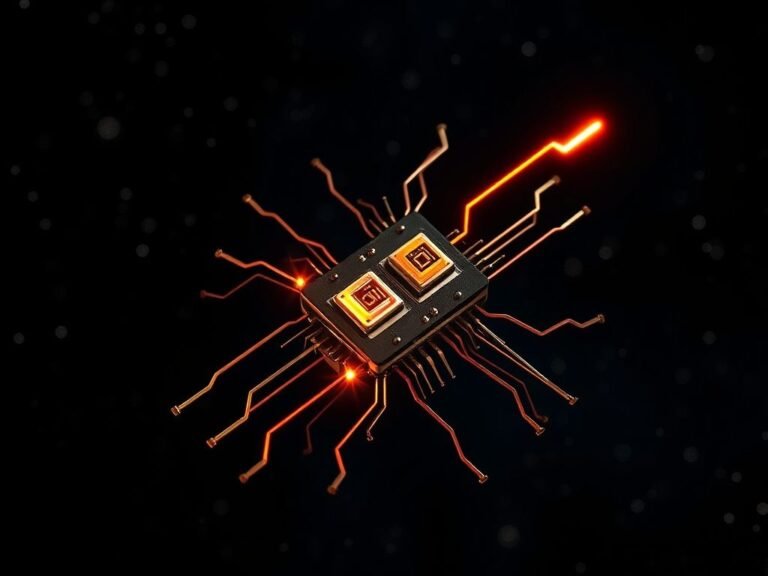
The Future of Space Surveillance: Real-Time Views of Earth Are Here
🌍 A Smarter Way to Design Satellite Constellations for Earth Observation
A new design for Low Earth Orbit (LEO) satellite constellations is pushing the boundaries of space-based Earth observation. The system uses groups of coordinated satellites and advanced swarm optimization techniques to achieve highly precise imaging and global coverage — as demonstrated in simulations involving 891 satellites.
Satellite constellations have long been essential for GPS, global internet, and reconnaissance, with major systems like GPS, Glonass, Beidou, and Starlink setting the standard. But the next generation of mega-constellations aims even higher, promising faster, more detailed insights into our planet’s surface and atmosphere.
Designing such massive networks is no simple task. It’s a complex, nonlinear challenge that goes beyond traditional methods. While early constellations focused on uniform global coverage, today’s systems must meet specialized needs — from high-resolution imaging to real-time data transmission.
In a recent study published in Space: Science & Technology , researchers from Harbin Engineering University, the China Academy of Space Technology, and Stevens Institute of Technology introduced a novel approach to constellation design.
Their method organizes satellites into core and support groups, enabling more intelligent and adaptable configurations. It also considers key factors like imaging swath width, synchronized satellite formations, and balanced global coverage using onboard sensors — paving the way for smarter, more efficient Earth observation systems.
🛰️ How Satellite Groups Improve Global Imaging Coverage
To maximize coverage and efficiency, the researchers divided the satellite network into two main types: basic satellites and accompanying satellites . Each basic satellite is supported by a small cluster of accompanying satellites, forming what they call a satellite group .
These groups are evenly distributed around the globe, with all basic satellites following the same orbital path — known as a subsatellite trajectory — to ensure consistent and reliable Earth observation.
The full constellation is created by repeating this satellite-group pattern across multiple orbits. To determine the ideal altitude for these satellites, the team used a method based on regression orbits , where a satellite completes exactly R orbits in D days. This ensures optimal alignment with Earth’s rotation.
They also adjusted for natural gravitational influences — such as the planet’s slightly irregular shape — to maintain long-term orbital stability without frequent corrections.
🧭 Fine-Tuning Satellite Coverage and Response Time
The research team next analyzed how wide an area each satellite group can observe, which determines how many orbital paths are needed to ensure full global coverage. Using Earth’s radius and the satellites’ scanning range, they mapped out the necessary spacing to avoid any gaps in observation.
They also studied how quickly the system can respond to user requests for images or data. If fast access is required, satellites must be positioned so that at least one is always within range. This helped the team calculate how many basic satellites should be placed in each orbit to meet response-time goals.
By combining all these elements — orbital altitude, timing, spacing, and coverage — the researchers developed a comprehensive framework for designing powerful, high-performance satellite mega-constellations.
🛰️ Designing Elliptical Orbits for Supporting Satellites
The accompanying satellites share the same orbital path (semimajor axis) as the main satellite. Using the Clohessy-Wiltshire equations , which describe how satellites move relative to each other in space, researchers found that the motion of these supporting satellites around the main one follows an elliptical path .
By analyzing this movement, they determined the exact orbital setup needed for the first accompanying satellite. A key part of this calculation is that the position of the satellite at the start and halfway through its orbit (T/2) must be opposite — ensuring stable and predictable motion within the group.
🧠 Refining Satellite Orbits Using Smart Optimization
To improve the satellite constellation design, researchers started with initial orbit settings for each satellite and its companions. They then used a powerful computational method called the Nondominated Sorting Particle Swarm Optimization (NSPSO) to find more precise and efficient orbital paths.
🧮 Fine-Tuning the Satellite Constellation Using Optimization
The system calculates two performance goals — f1 (orbit consistency) and f2 (satellite positioning stability) — for each satellite setup. It then uses the best-performing solutions found so far — both from the overall group and from past trials of each individual setup — to guide improvements.
Using a mix of group data , past experience , and self-learning inertia , the algorithm updates each satellite’s position and speed. After generating new configurations, it recalculates f1 and f2 , and updates the list of top-performing designs — known as the Pareto front .
This process continues for a set number of cycles or until the improvements become very small. At the end, the best solution is chosen — either based on user needs or by combining f1 and f2 into one score.
In this study, after many iterations, the final selected solution had:
- f1 = 1.981
- f2 = 9516.482
This means the design achieved excellent orbit alignment and stable satellite coordination.
🛰️ Final Satellite Configuration: A Global Eye Every 35 Minutes
To test the method, researchers ran a simulation with the following settings:
- Orbital inclination: 66°
- Eccentricity: 0 (nearly circular orbits)
- Argument of perigee: 0
- Simulation time: 1 day
- Imaging width per satellite: 140 km
- Group imaging width: 1500 km
- Maximum observation-to-orbit time: 35 minutes
The results showed that the system quickly improved in the early stages, and the design became more stable over time.
The final constellation includes 891 satellites :
- 81 main satellites evenly spaced around Earth
- 10 supporting satellites orbiting each main satellite (total of 810 )
Together, they provide global coverage outside the polar regions every 35 minutes — a major step forward in real-time Earth observation.





